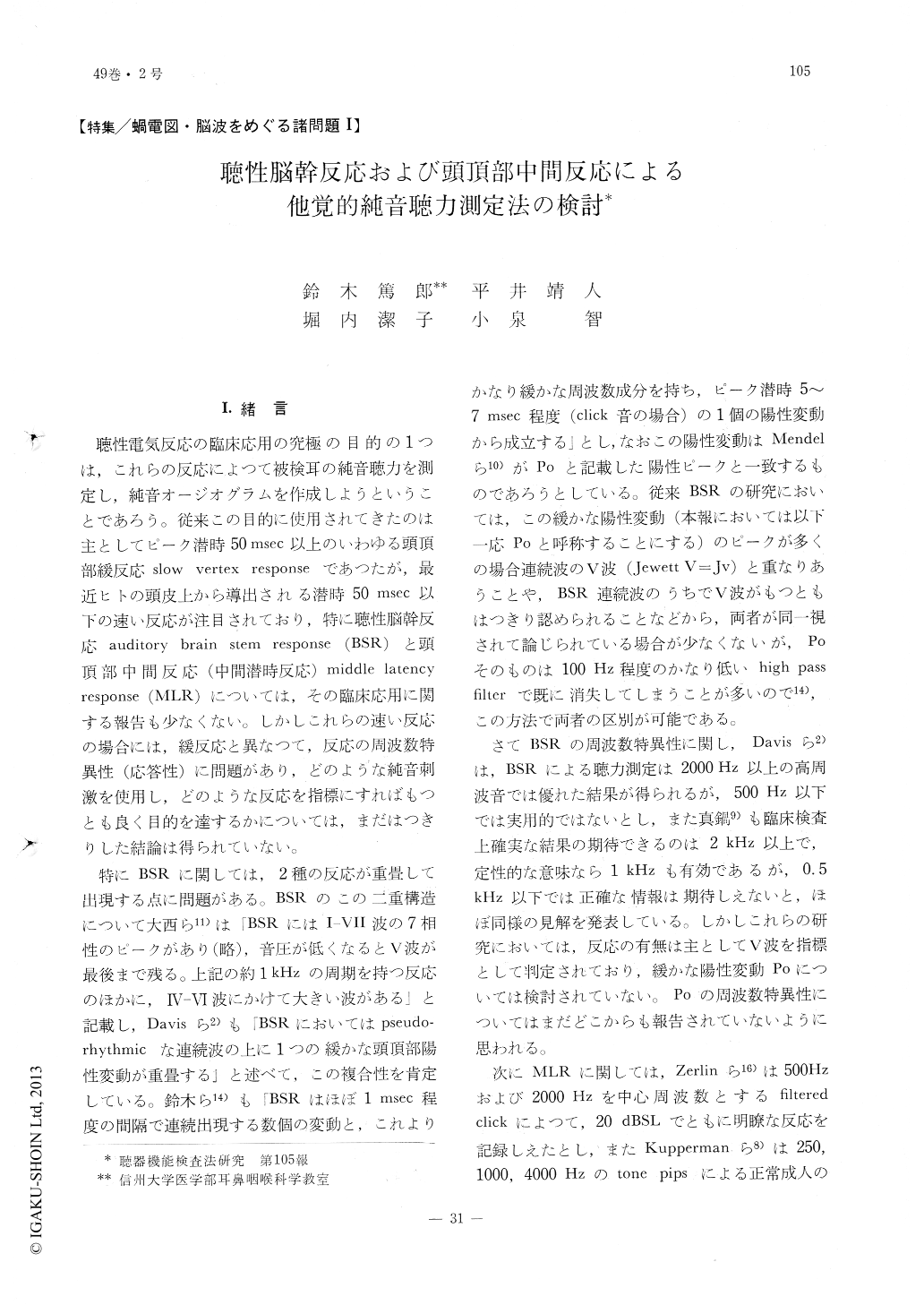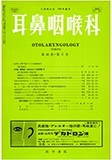Japanese
English
- 有料閲覧
- Abstract 文献概要
- 1ページ目 Look Inside
I.緒言
聴性電気反応の臨床応用の究極の目的の1つは,これらの反応によつて被検耳の純音聴力を測定し,純音オージオグラムを作成しようということであろう。従来この目的に使用されてきたのは主としてピーク潜時50msec以上のいわゆる頭頂部緩反応slow vertex responseであつたが,最近ヒトの頭皮上から導出される潜時50msec以下の速い反応が注目されており,特に聴性脳幹反応auditory brain stem response(BSR)と頭頂部中間反応(中間潜時反応)middle latencyresponse(MLR)については,その臨床応用に関する報告も少なくない。しかしこれらの速い反応の場合には,緩反応と異なつて,反応の周波数特異性(応答性)に問題があり,どのような純音刺激を使用し,どのような反応を指標にすればもつとも良く目的を達するかについては,まだはつきりした結論は得られていない。
特にBSRに関しては,2種の反応が重畳して出現する点に問題がある。BSRのこの二重構造について大西ら11)は「BSRにはI-VII波の7相性のピークがあり(略),音圧が低くなるとV波が最後まで残る。上記の約1kHzの周期を持つ反応のほかに,IV-VI波にかけて大きい波がある」と記載し,Davisら2)も「BSRにおいてはpseudorhythmicな連続波の上に1つの緩かな頭頂部陽性変動が重畳する」と述べて,この複合性を肯定している。鈴木ら14)も「BSRはほぼ1msec程度の間隔で連続出現する数個の変動と,これよりかなり緩かな周波数成分を持ち,ピーク潜時5〜7msec程度(click音の場合)の1個の陽性変動から成立する」とし,なおこの陽性変動はMendelら10)がPoと記載した陽性ピークと一致するものであろうとしている。従来BSRの研究においては,この緩かな陽性変動(本報においては以下一応Poと呼称することにする)のピークが多くの場合連続波のV波(Jewett V=Jv)と重なりあうことや,BSR連続波のうちでV波がもつともはつきり認められることなどから,両者が同一視されて論じられている場合が少なくないが,Poそのものは100Hz程度のかなり低いhigh passfilterで既に消失してしまうことが多いので14),この方法で両者の区別が可能である。
The positive fluctuation of the auditory brain stem response and the components of the middle latency or the middle vertex response were recorded and the possibility of making a comparison of these two responses for the objective hearing test is studied. There are two phases each in the rise and decay time of the stimulating sound. The maximum fluctuation being set at tone pips (250, 500 Hz, 1, 2, 4 kHz) was allowed to each subject under test with subjective threshold of 10, 20 and 30 dB in strength. The testing was conducted with 20 normal individuals.
As a result those tested under 500Hz, 1, 2, and 4 kHz sounds the reaction ranged from 10 to 20 dBSL. With the tone pip at 250 Hz a definite reaction was obtained which ranged from 20 to 30 dBSL. But whether this reaction is definitely related to the constant 250 Hz stimulation or not requires further investigations.

Copyright © 1977, Igaku-Shoin Ltd. All rights reserved.


